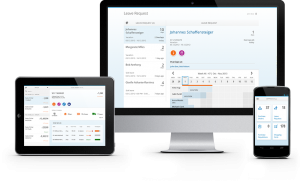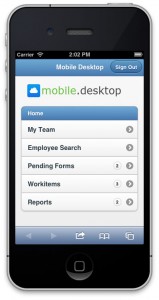Hi friends,
I attended SAPPHIRENOW/ASUG 2013 conference this past week. I went in search of some answers to questions I discussed in my last blog. I will touch on all those items and more in this blog.
Quick Thoughts on the Keynotes
I had overall mixed feedback for the keynotes. I thought Bill McDermott’s segment with sportscaster James Brown and guests was impactful, with a great customer endorsement from Under Armour. In the afternoon, Seth Godin was a great speaker and thought provoking. On Day 3, Professor Hasso Plattner also gave a nice summary of HANA within a Q&A format. This worked well for the most part, though it did get too technical at times for the audience, who were looking for more practical applications to how HANA will make their business/life better. It was disappointing to not hear from Lars Delgaard (who was absent due to a personal matter), especially for the HCM folks in the audience.
Overall, the timing on the Keynotes was not managed well – starting late (approximately 10-15 minutes) and then ending a good 25-30 minutes late on certain days. The audience for those venues can be engaged for one and a half hour max. Any more, you will start to lose the audience and the crispness of the session looses its impact. Hope that gets adjusted next year.
What’s in a Name, and Should We Care?
During the keynotes, I exchanged several tweets on the product name and correct capitalization of SAP HANA, since I had been seeing it written in a variety of ways: hana, SAP Hana, HANA, and SAP HANA. Thanks to Jonathan Becher, CMO of SAP, he set the record straight:
“@jeremymasters: Not consistent HANA vs Hana – anyone know official name? #SAPPHIRENOW #saphana” << official name & spelling is SAP HANA
— Jonathan Becher (@jbecher) May 16, 2013
So, we all now know from the source: the official name is SAP HANA.
While on the subject, do we even know if HANA stands for something? Usually capitalization indicates an acronym, right? For example, SAP stands for Systems, Applications, and Products in Data Processing … Say that five times fast ;o)
SAP’s new UI offering, SAP Fiori, was also getting its name hacked in the Twitterverse during the conference. There were also folks confused whether Fiori was FIORI. At least we didn’t hear Fury. Again, Jonathon set the record straight:
@jeremymasters SAP Fiori, no caps
— Jonathan Becher (@jbecher) May 16, 2013
That said… should we really care about all this grammar? I’ll let you decide, but I would think consistency will help with the marketing behind this important product from SAP.
SAP Core HR and Employee Central
I chose to leave this section SAP Core HR and Employee Central instead of SAP Core HR versus Employee Central. The reason being: it was clear from the sessions that SAP is investing in both. In his session on “The 2013 Guide to SAP HCM Improvements: On-Premise and Cloud”, Jean-Bernard Rolland made it clear that SAP will not be forcing any customers to migrate from SAP Core HR to Employee Central. In fact, SAP has been and will continue to make investments in the SAP Core through the HR Renewal program. (Manager and Employee landing pages are planned to be released in July of 2013). This is good news for on premise customers who are not ready for the cloud. Vendors, like Worklogix, also offer an option for improved usability on premise of Core HR for HR professionals, Managers, and Employees. (You can check out that solution, HR Desktop, here).
Bottom line is this: as SAP consulting partners, we need to continue offering customers options since each customer’s roadmap is situational on a number of factors including their existing investments, and technology/organizational readiness.
Also kudo to the entire ASUG HCM team, as I heard most attendees say that the sessions were valuable and informative.
Yet Another UI Option: SAP Fiori
SAP’s latest UI offering (available version 1.0 as of May 2013) is SAP Fiori, which boasts a rapid deployment of 25 of the most used applications (some HR, some non-HR like Procurement and Sales). It’s framework is based on SAPUI5 (i.e., SAP’s HTML5) but also needs the SAP Gateway (exact version: SAP NetWeaver Gateway 2.0 SPS 06) for consumption of these services. It is device-agnostic, meaning it will work on any device such as smart phone, tablet, or desktop. Part of the appeal is that it can work on current investment, with an intuitive and “responsive design” (i.e., the screen will re-format based on device).
Current offerings within an HR context for ESS (employee self service) include the following:
- Time Sheet
- Leave Request
- Paystub
- Benefits Overview
Current offerings within an HR context for MSS (manager self service) include the following:
- Approval of Time Sheets
- Approval of Leave Requests
- Generic Approve Requests
You can check out the Fact Sheet here, the pre-requisites here.
Remembering some recent innovations around SAP, we saw Eh5 UI Renovations in 2010, the MSS Add-on 1.0 and CORBU in 2011, HR Renewal in 2012, and now SAP Fiori. SAP Fiori is the first “mobile first”-developed technology from SAP which is a step in the right direction. That said, the app list for HR is basic and many SAP customers will balk at the price ($150 per user, one time setup). It also lacks any role for HR (current roles: Employees, Managers, Sales reps, and purchasing agents).
It’s too early to know whether SAP Fiori will be an attractive option for customers using SAP HCM. SAP hopes that it’s not another flop like Duet, which got little to no traction, despite being a very cool concept. On the ground, I am still seeing customers wanting to leverage their existing portal investments, whether it be Netweaver, Sharepoint, or Websphere. And I don’t see that going away anytime soon.
What are your thoughts?
SAP HANA and its application for SAP HCM?
I attended an informative session “Leverage the power of SAP HANA in HCM” with Srikanth Gopalakrishnan and Michel Wulf from SAP on the developments and innovations around SAP HANA for Human Resources. The discussion was mostly payroll-focused, as some of customer pain comes from longer-than-desired SAP Payroll processing times. The in-memory capabilities around SAP HANA will be able to power the business suite, as a platform, by greatly speeding up processing and analytic time. This innovation will be available for customers running SAP Payroll on premise, as well as for customers using the SAP Payroll cloud option (i.e., SAP R/3 instantiated payroll in the cloud).
Oh, and still no word about a full, native cloud payroll on Employee Central, but this could be in the making behind several closed doors.
Next Stop: Amsterdam!
It was great seeing customers, partners, and colleagues at the show. It was an enlightening week for me and my colleagues – thank you SAP and ASUG!
For my European friends, see you next month in Amsterdam for the SAPInsider HR2013 conference.
Jeremy
You can follow me on Twitter: @jeremymasters



